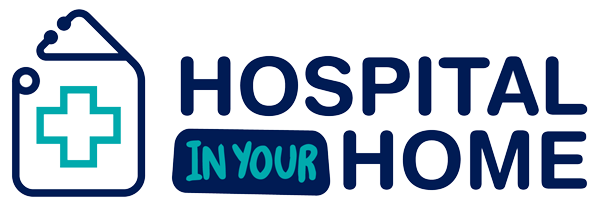
The traditional acute care model, centered around hospital stays, is transforming significantly. The emergence of Hospital at Home (HaH) programs is challenging the status quo, offering a patient-centric approach to delivering hospital-level care within the comfort and familiarity of patients’ homes.
The Promise of Hospital at Home
HaH provides comprehensive medical care, including medication administration, monitoring, and specialist consultations, directly to patients in their homes. This innovative model is rooted in the recognition that, for many patients, the hospital environment can be overwhelming, leading to increased stress, a higher risk of infections, and delayed recovery.
Improved Patient Outcomes
Patients in a familiar HaH environment had better clinical outcomes and experienced lower rates of hospital-acquired infections, such as pneumonia and urinary tract infections. Being in a comfortable home setting can contribute to faster physical and emotional recovery, enabling patients to resume normal activities sooner. Patients often report improved quality of life due to increased comfort, privacy, and the ability to maintain daily routines.
Patients may experience improved pain management at home, increasing comfort and adherence to treatment plans. The continuity of care provided by HaH programs often fosters stronger relationships between patients and their healthcare providers, leading to improved communication and adherence to treatment plans.
Reduced Healthcare Costs
HaH programs can significantly reduce the length of hospital stays, freeing up hospital beds for patients with more acute needs. This is especially true with the Acute Hospital Care at Home (AHCAH) waiver extended through the end of this year.
Patients may also have reduced medication costs due to fewer hospital-related prescriptions. Patients and their caregivers save on transportation costs associated with hospital visits.
Improved Efficiency and Resource Utilization
HaH programs can utilize existing healthcare staff more efficiently by providing care in a home setting. By diverting patients who can be safely cared for at home, HaH programs can help alleviate hospital overcrowding. HaH models can improve access to care for patients in rural or underserved areas, reducing the need for long-distance travel.
Enhanced Patient and Family Satisfaction
Patients in HaH programs often report feeling more in control of their care and have increased opportunities to participate in decision-making. HaH programs can empower family members to play a more active role in patient care, leading to increased satisfaction and better outcomes. For caregivers, HaH can reduce the stress and burden of providing care in a hospital setting.
Key Components of a Successful HaH Program
To achieve optimal results, HaH programs require a carefully orchestrated approach. The first necessary element is identifying suitable candidates. Patients with stable conditions, adequate home support, and a willingness to participate are typically good fits for HaH.
The next element is having a strong multidisciplinary team. That includes physicians, nurses, social workers, and other specialists and is essential to provide comprehensive care.
Telehealth and remote monitoring technologies are vital in enabling continuous assessment and intervention. The last component is community partnerships. Collaboration with home health aides, pharmacies, and other community-based services enhances care delivery and patient support.
Challenges and Opportunities
While the potential benefits of HaH are compelling, several challenges must be addressed for widespread adoption. Despite those challenges, the growing body of evidence supporting HaH’s effectiveness drives increased interest and investment in this model. As healthcare systems continue to seek innovative solutions to improve patient care and reduce costs, HaH is poised to play a significant role in shaping the future of healthcare delivery.
- Infrastructure and resources: Adequate infrastructure, including reliable communication and transportation systems, is necessary for effective care delivery.
- Regulatory barriers: Overcoming regulatory hurdles and securing appropriate reimbursement for HaH services is essential for program sustainability.
- Staffing and training: Ensuring sufficient staffing levels and providing adequate training for healthcare professionals are crucial for delivering high-quality care.
Embracing the Future of Healthcare with Hospital In Your Home
By embracing the Hospital at Home model, healthcare systems can significantly enhance patient care, reduce costs, and improve resource utilization. Hospital In Your Home is at the forefront of this transformative approach, offering innovative solutions to deliver high-quality, patient-centered care in the comfort of patients’ homes.
With our expertise and commitment to excellence, we are dedicated to partnering with healthcare providers to implement successful HaH programs and improve the overall health and well-being of the community. Contact our team today and see how working with a dedicated and passionate HaH provider can make all the difference!
